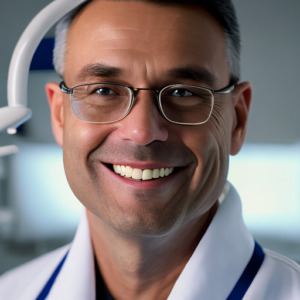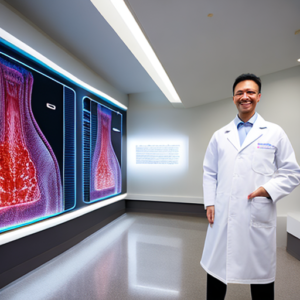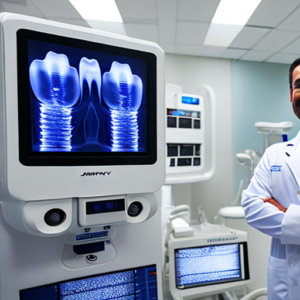Are you experiencing persistent bad breath, bleeding gums, or discomfort while brushing your teeth? Many people dismiss these symptoms as just a minor inconvenience, but they can be early signs of a more serious condition: gum disease – formally known as periodontitis. Left untreated, gum disease isn’t merely about having red, swollen gums; it’s a progressive infection that can ultimately lead to tooth loss and even impact your overall health. This article delves deep into the advanced treatment options available for tackling periodontitis, moving beyond standard cleaning procedures to explore cutting-edge techniques designed to restore oral health and prevent future complications. We’ll cover everything from laser dentistry to regenerative medicine – providing you with a comprehensive understanding of how to fight back against gum disease effectively.
Understanding Gum Disease Symptoms Explained
Gum disease, or periodontitis, exists on a spectrum, ranging from mild gingivitis to severe periodontitis. Gingivitis is the initial stage, characterized by inflammation of the gums – often red and swollen – and bleeding during brushing or flossing. It’s largely reversible with improved oral hygiene. However, if left unchecked, gingivitis can progress to periodontitis, a more serious infection where the tissues supporting your teeth are damaged. This damage leads to bone loss around the teeth, making them loose and eventually causing tooth loss.
Recognizing the symptoms is crucial for early intervention. Besides bleeding gums and bad breath (halitosis), other signs of gum disease include: receding gums – where the gums pull away from the teeth exposing more of the root surface; persistent discomfort or pain in the mouth; loose teeth; changes in your bite; and sensitivity to hot, cold, or pressure. A dentist can accurately diagnose periodontitis through a thorough examination, including probing around the teeth to measure gum pocket depths – which are measurements of space between the teeth and gums.
Statistics paint a concerning picture: According to the Centers for Disease Control and Prevention (CDC), approximately 75% of adults in the United States have some form of periodontal disease. Furthermore, studies show a strong link between gum disease and systemic health conditions like heart disease, diabetes, and respiratory infections. This highlights the importance of proactive oral care and seeking professional treatment when needed.
Traditional Gum Disease Treatment: Scaling and Root Planing
Scaling and root planing is the cornerstone of gum disease treatment. It involves removing plaque and tartar (calculus) from above and below the gumline, as well as smoothing the tooth roots to create a clean surface that allows gums to reattach. This process significantly reduces bacteria levels in the mouth, allowing the gums to heal. It’s a relatively non-invasive procedure often performed under local anesthesia.
The Process: Scaling removes the hardened tartar, while root planing smooths the surfaces of the tooth roots. The dentist or hygienist uses specialized instruments to accomplish this. This is typically followed by a period of monitoring and maintenance cleanings to ensure the gums remain healthy.
While scaling and root planing can be effective for mild to moderate cases, it doesn’t always regenerate lost bone or tissue. For more advanced periodontal disease, additional treatment options are often necessary.
Advanced Gum Disease Treatment Options
1. Laser Dentistry for Periodontitis
Laser dentistry has emerged as a powerful tool in the fight against gum disease. Lasers can precisely target and destroy bacteria without significantly damaging surrounding tissues. Different types of lasers are used, including Nd:YAG (neodymium-doped yttrium aluminum garnet) lasers and CO2 lasers.
How it Works: Nd:YAG lasers are primarily used for bacterial reduction, while CO2 lasers can also be used to precisely remove infected tissue. The laser energy heats up the bacteria, effectively killing them. The process is often painless and has a faster healing time compared to traditional methods.
Case Study: A study published in the Journal of Periodontology found that patients undergoing laser treatment for periodontitis experienced significantly reduced inflammation and improved attachment levels compared to those receiving conventional scaling and root planing alone. The average improvement in clinical parameters was approximately 20% greater with laser therapy.
2. Regenerative Dentistry: Restoring Lost Bone and Tissue
Regenerative dentistry focuses on restoring lost bone and tissue around the teeth, essentially reversing the damage caused by periodontitis. This approach is particularly beneficial for patients with advanced periodontal disease where significant bone loss has occurred. There are several techniques:
a) Guided Tissue Regeneration (GTR):
GTR involves placing a barrier membrane between the gum tissue and the underlying bone to prevent the gums from growing into the defect, allowing new bone and soft tissue to regenerate. A biocompatible material called collagen is often used as the barrier.
b) Bone Grafting:
Bone grafting uses donor bone or synthetic bone substitutes to fill in areas of lost bone. This provides a foundation for new tissues to grow around the teeth. Different types of grafts exist including block, ridge, and socket grafts, chosen based on the specific situation.
c) Soft Tissue Grafts:
Soft tissue grafts involve taking tissue from another area of your mouth (typically the palate) or using a donor graft to cover exposed tooth roots. This restores the gumline and protects the teeth from further damage.
3. Antimicrobial Therapies
Beyond mechanical cleaning, antimicrobial therapies can help control bacterial infection. These include:
a) Local Anesthetics:
Direct injection of local anesthetics into periodontal pockets helps numb the area and reduce inflammation.
b) Antibiotic Irrigants:
Solutions containing chlorhexidine or other antibiotics are used to irrigate periodontal pockets, reducing bacterial load. These are often used in conjunction with scaling and root planing.
4. Platelet-Rich Plasma (PRP) Therapy
PRP therapy involves drawing a small amount of your own blood, processing it to concentrate the platelets – which contain growth factors – and then injecting it into the gums. These growth factors stimulate tissue regeneration, reduce inflammation, and promote healing.
How it Works: The concentrated platelets release proteins that encourage new bone formation and accelerate gum tissue repair. PRP therapy is often used as an adjunct to traditional periodontal treatment or for patients with mild to moderate disease.
Conclusion
Gum disease, or periodontitis, is a complex condition requiring proactive management. While scaling and root planing remains the standard initial treatment, advanced options like laser dentistry, regenerative techniques, and antimicrobial therapies offer targeted solutions for restoring oral health and preventing tooth loss. Early detection and consistent oral hygiene are paramount. Remember that gum disease isn’t just an issue of having red gums – it’s a systemic health concern with potentially far-reaching consequences. By understanding the various treatment options available and seeking professional care when needed, you can take control of your periodontal health and maintain a healthy, beautiful smile for years to come.
Key Takeaways
- Gum disease progresses from gingivitis to periodontitis if left untreated.
- Regular dental checkups and professional cleanings are crucial for preventing and managing gum disease.
- Advanced treatment options like laser dentistry, regenerative medicine, and antimicrobial therapies can effectively treat advanced cases of periodontal disease.
- Maintaining good oral hygiene – brushing twice daily and flossing regularly – is fundamental to controlling bacteria and preventing future problems.
Frequently Asked Questions (FAQs)
Q: How do I know if I have gum disease?
A: Symptoms include bleeding gums, bad breath, receding gums, loose teeth, and sensitivity. Consult your dentist for a professional diagnosis.
Q: Is gum disease curable?
A: While it can’t be completely cured, periodontitis can be effectively managed with proper treatment and ongoing maintenance to prevent progression.
Q: Can gum disease affect my overall health?
A: Yes. Gum disease has been linked to increased risks of heart disease, diabetes, respiratory infections, and rheumatoid arthritis.
Q: How often should I get professional cleanings for gum disease?
A: Individuals with gum disease typically require more frequent cleanings – usually every three to six months – depending on the severity of their condition.
Q: Are there any home remedies for gum disease?
A: While home care is important, it’s not a substitute for professional treatment. However, rinsing your mouth with warm salt water can provide temporary relief from inflammation and promote healing.
















